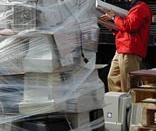Hazardous Materials Found in E-Waste
Most people in the United States are now aware that disposing of electronic equipment by traditional methods-such as dumping in landfills-is harmful to the environment. It is intuitive to people that placing large items that will never completely break down in landfills is a wasteful use of land, but the reasons for special treatment of electronic waste go beyond that. Electronics contain hazardous materials that can harm the planet if placed untreated in landfills. Also, many electronic devices contain valuable materials that can be reused, thereby conserving natural resources.
One material that is hazardous is lead. Televisions and old CRT computer monitors contain varying amounts of lead. Due to its characteristics and ease of use, lead has been used since ancient times to make pottery, build ships, act as weights, and construct pipes. Lead has also been used in gasoline, batteries, paint, crystal, and insecticides.
Lead, however, is also poisonous. As awareness of its side effects grew and the public began expressing concerns about its widespread use, in the 1970s the U.S. government began restricting its use. However, lead continues to be a leading environmental health risk for children in the U.S.
Toxic effects of lead on children are well documented. Research in the last few decades shows quite convincingly that there is a relationship between the amount of lead a child ingests and problems in thinking and learning. Furthermore, this sort of poisoning appears to be caused by what had been considered "safe" levels of lead exposure. Even very low levels of exposure to lead may cause significant damage to learning ability.
Cadmium is another toxic product found in electronic equipment, especially in the nickel and cadmium (Ni-Cd) batteries used in many portable electronic devices. In...


